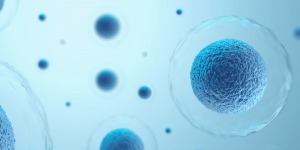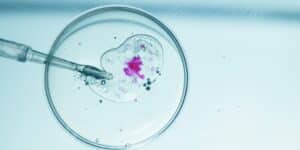The first days of the development of a human embryo, known as the preimplantation phase, are of great importance. During this time, the first cells form, determining whether the embryo can survive, how it implants in the uterus, and how the fetal tissue develops. Since the use of human embryos for research purposes is still subject to logistical, ethical, and legal restrictions, scientists are turning to alternative models, including stem cell models and animal models. In a new study published in Nature Cell Biology, Sophie Petropoulos, a researcher at CRCHUM, the research center of the University of Montreal Hospital Center, and at the Karolinska Institutet in Sweden, shows that guinea pigs can serve as a reliable and robust small animal model to improve our understanding in two important areas of research: comparative biology and human embryogenesis.
Guinea Pig Model to Better Understand Early Human Embryogenesis
Guinea pigs have long been used for studies in developmental biology and are very similar to humans in their general physiology. They are also the only small animals that undergo a complete estrous cycle in females, undergo a similar implantation process, and develop similar placentas. “Despite these obvious similarities, pre-implantation development had not been studied before,” said Petropoulos, associate professor at UdeM and holder of a Canada Research Chair in Functional Genomics of Reproduction and Development. ”Our lab focuses on infertility and early human development research, so we wanted to find a model that would allow us to answer our questions.”
In the study, the researchers used a technique called single-cell RNA sequencing to create a complete atlas of the genes involved in preimplantation development in guinea pigs and studied their timing and expression. They also inhibited and activated signaling pathways to see how these genes might influence embryonic development. When the researchers compared the development of the guinea pig embryo with their previous work, they were very surprised by the striking similarity to early human embryogenesis.
Model Could Contribute to Improved Fertility Treatments and Reproductive Technologies
This discovery opens up new possibilities for understanding infertility in women and for developing therapeutics designed to ensure healthy pregnancies, according to Petropoulos, who was supported in her study by two first authors: Jesica Romina Canizo, a research associate in Petropoulos’ lab at CRCHUM, and Cheng Zhao, a research specialist in her lab at Karolinska Institutet. The guinea pig model can help scientists understand how early exposure to drugs or environmental disturbances affects the long-term health of babies, or why some women have repeated implantation failures.
She and her team have now begun to study embryonic development and gastrulation (a stage of embryogenesis) after implantation, during which all the organs and tissues of the human body are formed. Since 80 percent of miscarriages occur in the first trimester, scientists are very interested in better understanding this “black box” stage of human development. In the long term, Petropoulos and her team believe that the preimplantation model using guinea pigs could provide extremely useful information about the best conditions for the development of healthy embryos and fetuses. This could contribute to the improvement of fertility treatments and reproductive technologies.





